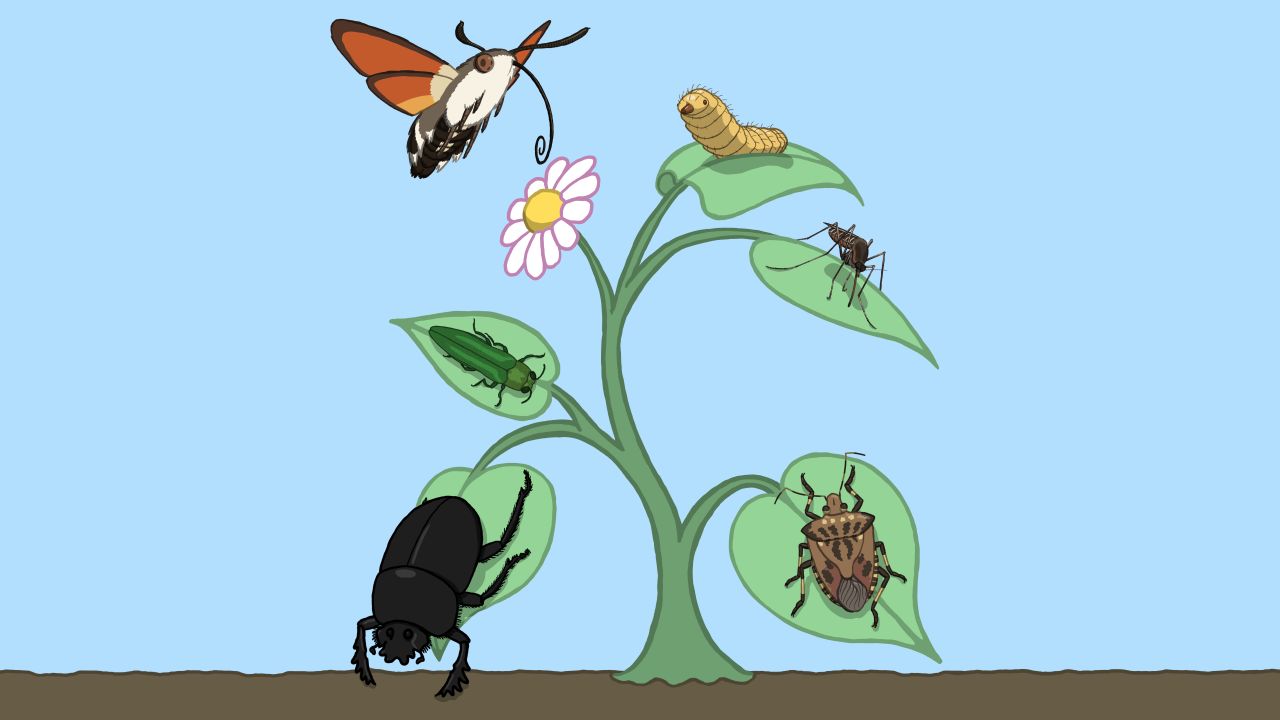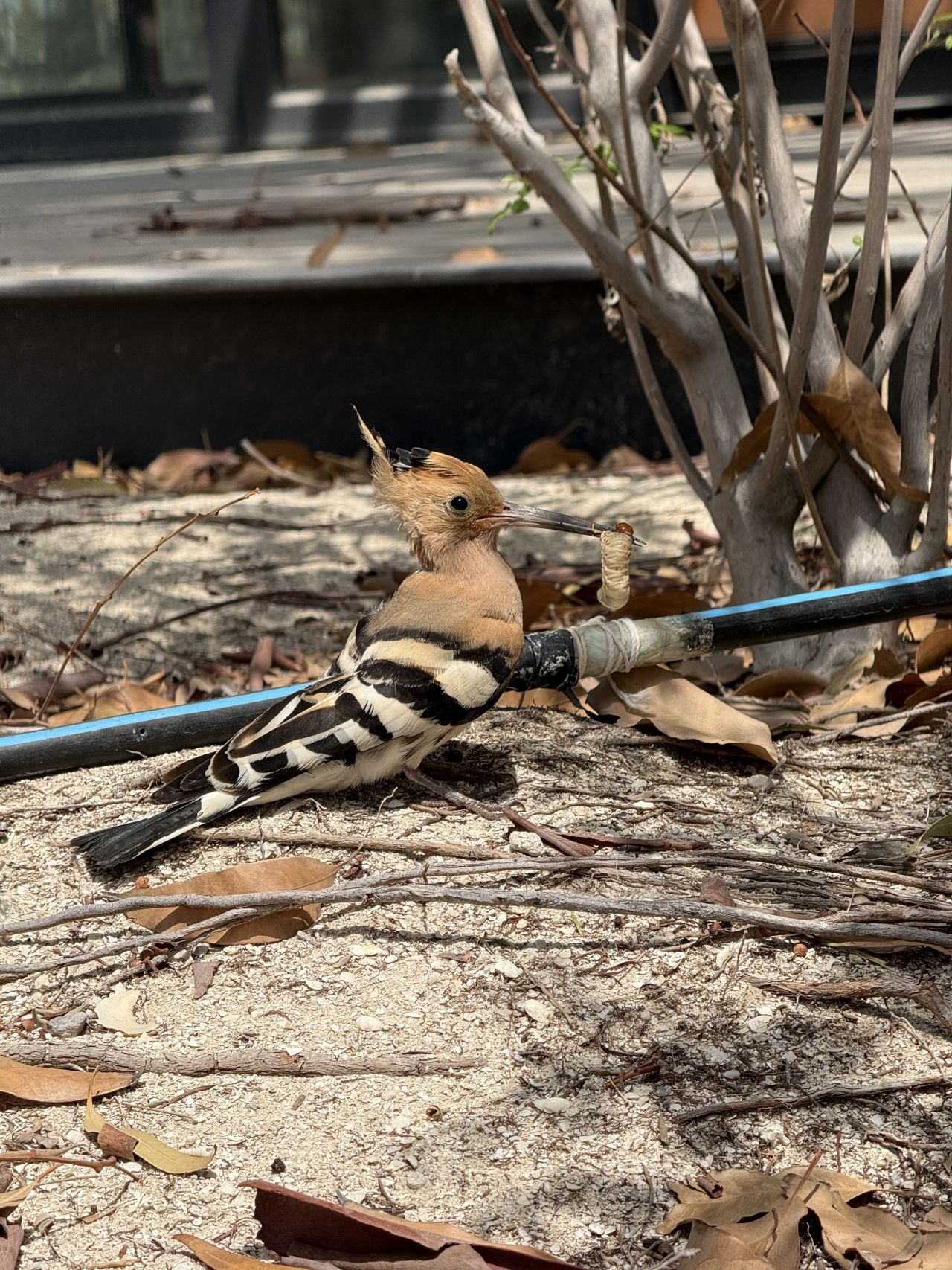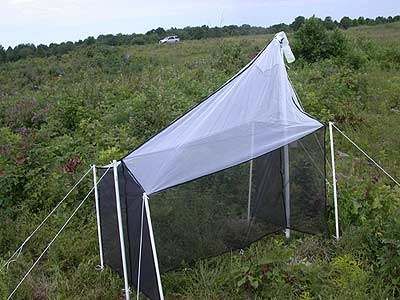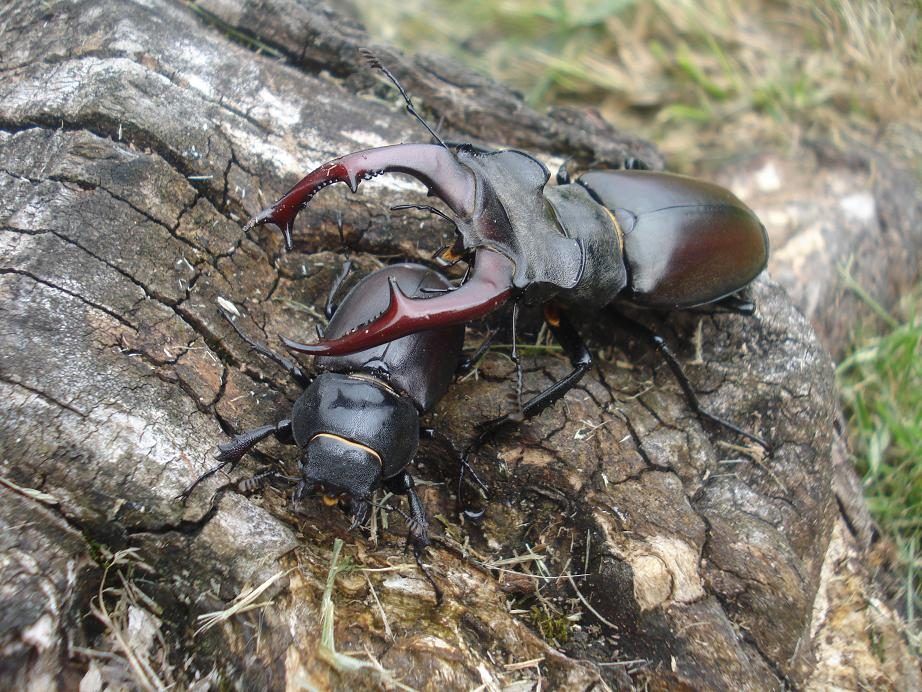Insect biodiversity
Insect biodiversity is rapidly declining due to habitat loss, climate change, pesticides, and intensive agriculture – disrupting ecosystems and food webs. Monitoring and public education are crucial to protect these vital species.

A collage of insect drawings symbolizing the mesmerizing diversity of insects. Image: © Martin Breu
Over recent decades, alarming declines in insect species diversity and distribution range have been observed in many countries. New studies also show that the distribution, frequency, and biomass of even very common species are decreasing rapidly.
In Switzerland, a report titled "Insect Biodiversity in Switzerland," published by the Swiss Academy of Sciences (SCNAT) in German, French, and Italian, highlights the ongoing decline of insect biodiversity. The report also presents 12 actionable solutions to mitigate the negative impact of human activities on insect populations, such as reducing pesticide use, lessening the effects of climate change and minimizing light pollution.
1- Identify and preserve insect hotspots
2- Enhance, connect, and create habitats
3- Implement targeted species conservation measures
4- Minimise risks and use of pesticides
5- Reduce nitrogen and phosphorus inputs
6- Promote insect-friendly land management
7- Mitigate climate change
8- Reduce light pollution
9- Expand monitoring and impact assessments
10- Intensify research
11- Improve species knowledge and action competence
12- Address systemic levers (transform politics and economy towards sustainability)
When insects are gone, we lose the birds as well. In rural areas, scientists observed 60% fewer birds that feed on insects.

A common hoopoe holding a beetle larva in its beak. Image: © Kaan Mika
Monitoring is the key
To assess whether an insect species is at risk, careful monitoring is essential. Researchers employ a variety of methods to estimate both species' diversity and biomass across different locations. Traditional techniques – such as pitfall traps, sweep nets, light traps, and sticky traps – are commonly used to collect representative samples of insect populations. These samples are then identified, measured and cataloged, providing valuable data on population trends and distribution patterns.

A Malaise trap used to trap flying insects. Image: Wikimedia Commons/Ceuthophilus, CC License
Citizen scientists also play a crucial role in monitoring insect biodiversity by contributing valuable data on species distribution and abundance. Through various programs and initiatives, individuals can assist in collecting observations of insects, in their local environments. By submitting sightings, photos, and other relevant information, citizen scientists help researchers track trends in insect populations over time. This collaborative effort expands the reach of biodiversity monitoring, especially for species that are difficult to study in depth. For example, our article on fireflies highlights how community-driven data is essential for understanding the status of these iconic insects and their habitats. Another method involves the use of environmental DNA, which requires a lot of expertise but is very effective in tracking elusive insect species.
For rarer species, the Red List – compiled by expert committees – is vital as it assesses extinction risks and helps to identify those most in need of protection. The list also reflects ecosystem health, as declining insect populations indicate broader environmental issues. This tool guides conservation efforts and prioritizes resources for species at greatest risk.
Did you know?
The "windshield phenomenon" refers to the observed decline in the number of dead insects accumulating on vehicle windshields and bumpers – a trend that has moved beyond anecdotal evidence and is now supported by scientific data. For instance, a study in Denmark tracked the number of dead insects on vehicles over a 20-year period along the same stretch of road. It concluded that the reduced insect presence on windshields was primarily due to a broader decline in local insect populations. This finding aligns with regional insect monitoring studies, reinforcing the correlation between reduced insect biomass and the observed decrease in roadside insect mortality.
Dead wood gives life
Dead wood is a vital component of forest ecosystems, contributing significantly to insect biodiversity. A single dead tree can support hundreds of species – including beetles, fungi, mites, and more – all interacting in a complex web. As the wood decays, it provides food, shelter, and breeding grounds for numerous saproxylic (dead-wood dependent) species. For instance, longhorn beetles (Cerambycidae) and bark beetles (Scolytinae) lay their eggs under the bark of dead trees, where their larvae feed on the decomposing wood. These beetles, in turn, attract predators and parasitoids, creating a layered food web that depends entirely on the presence of dead wood.

European stag beetles (Lucanus cervus) depend on deadwood and are listed as Near Threatened by the IUCN Red List. Image: Wikimedia Commons/Bugman95, CC License
In temperate and boreal forests, a big portion of forest-dwelling insect species depend on dead wood at some stage of their life cycle. Species like the stag beetle (Lucanus cervus), the rare hermit beetle (Osmoderma eremita), and various hoverflies rely on hollow logs, tree stumps, or rotting branches. These microhabitats are irreplaceable, and their loss – due to overmanagement or the removal of dead trees – poses a significant threat to many specialized insects. Dead wood may appear lifeless, but it is, in fact, teeming with life that is essential to the health of the forest.
Turn off the lights
Artificial light at night (ALAN) is a growing threat to biodiversity and natural processes. Increasing evidence suggests it may be contributing to the decline of insect populations. Artificial light profoundly disturbs insects by confusing their perception of time and space, masking vital environmental signals, and encouraging harmful attraction to light sources. Lighting at nighttime affects insects in many ways, disrupting their natural behaviors at different stages of life –interfering with activity, increasing predation risk, reducing the number of eggs laid and hindering reproduction.
There are five basic recommendations for insect-friendly outdoor lighting:
- Only use lights at night when necessary.
- Target the lighting to reduce its effect on the surroundings.
- Dim the light so it does not attract insects from far away.
- Use motion detectors to save energy and avoid prolonged exposure of animals to light.
- Switch to low-wavelenght light (many insects cannot see red light) instead of UV or blue light.
To learn more about how to make outdoor lighting more environmentally friendly , visit the website of DarkSky International.
This topicexplores the decline of insect biodiversity, methods for measuring it, and strategies for protecting these essential yet fragile species.
References
Widmer I et al. 2021. La diversité des insectes en Suisse : importance, tendances, possibilités d'action. Swiss Academies Reports 16;9. doi.org/10.5281/zenodo.5144800
Hallmann CA et al. 2021. Insect biomass decline scaled to species diversity: General patterns derived from a hoverfly community. Biological sciences 118;2:e2002554117. https://doi.org/10.1073/pnas.200255411
Hallmann CA et al. 2017. More than 75 percent decline over 27 years in total flying insect biomass in protected areas. PLOS one 10.1371/journal.pone.0185809
Møller AP 2019. Parallel declines in abundance of insects and insectivorous birds in Denmark over 22 years. Ecology and evolution 9;11:6581-6587. https://onlinelibrary.wiley.com/doi/10.1002/ece3.5236
Keystone-SDA/jc. Swiss scientists call for action on disappearing insects https://www.swissinfo.ch/eng/sci-tech/biodiversity_swiss-scientists-call-for-action-on-disappearing-insects/44895310 Accessed 9.4.2025
